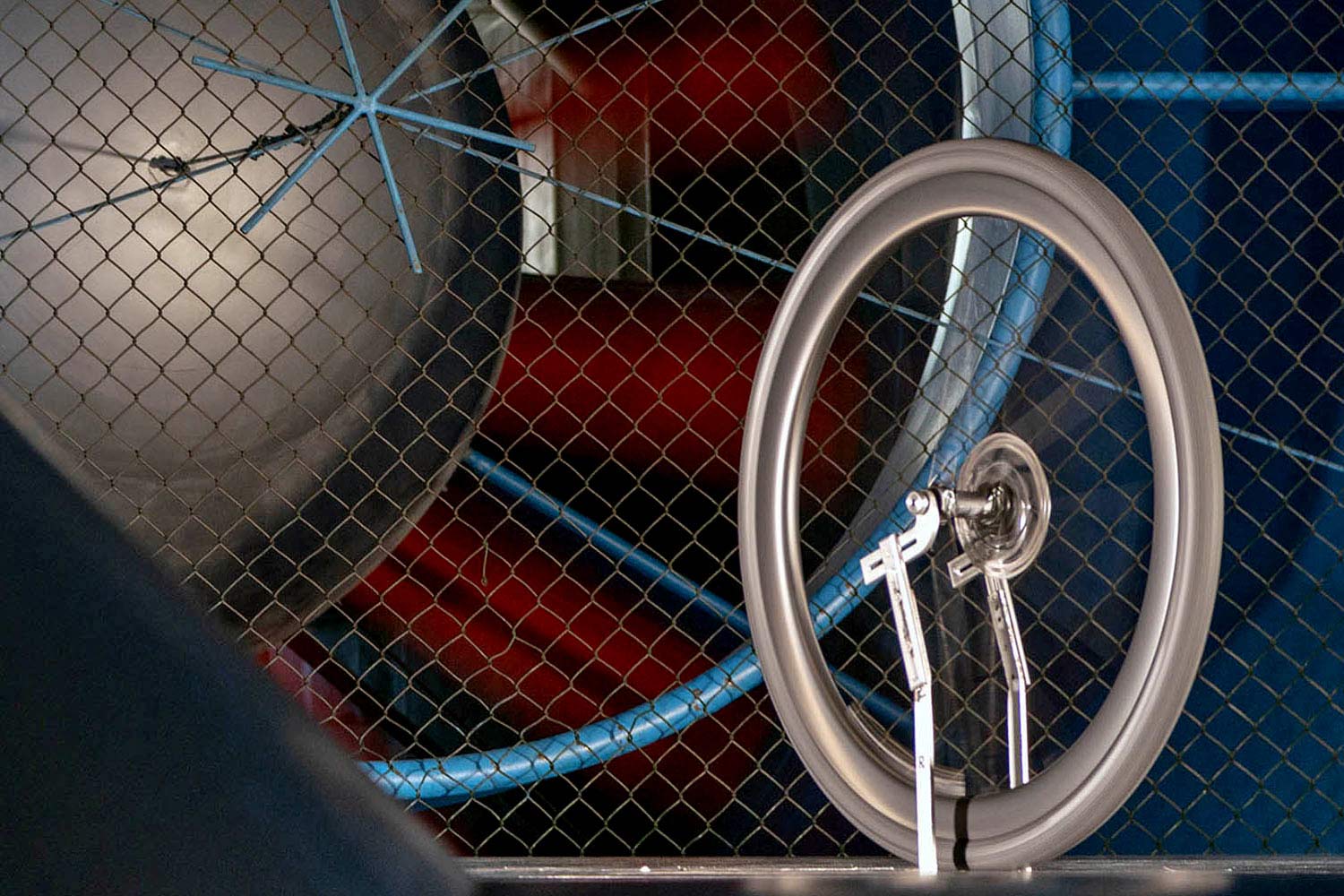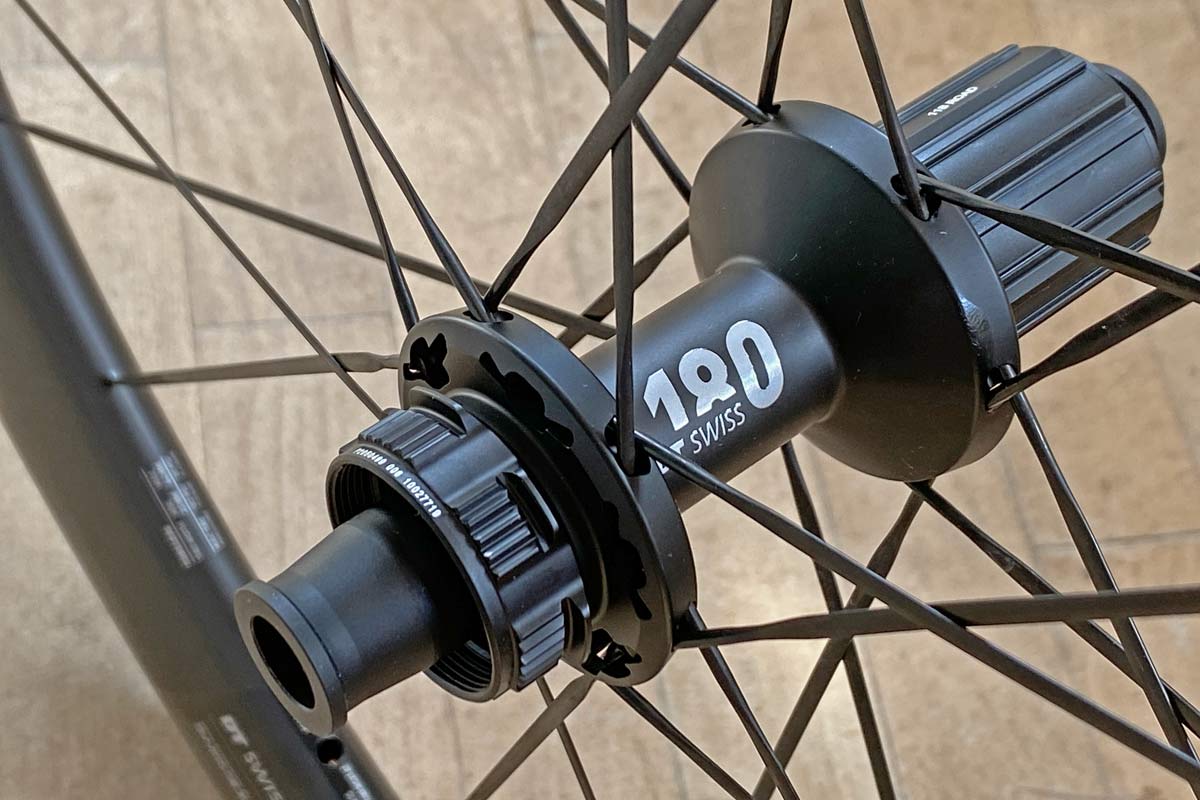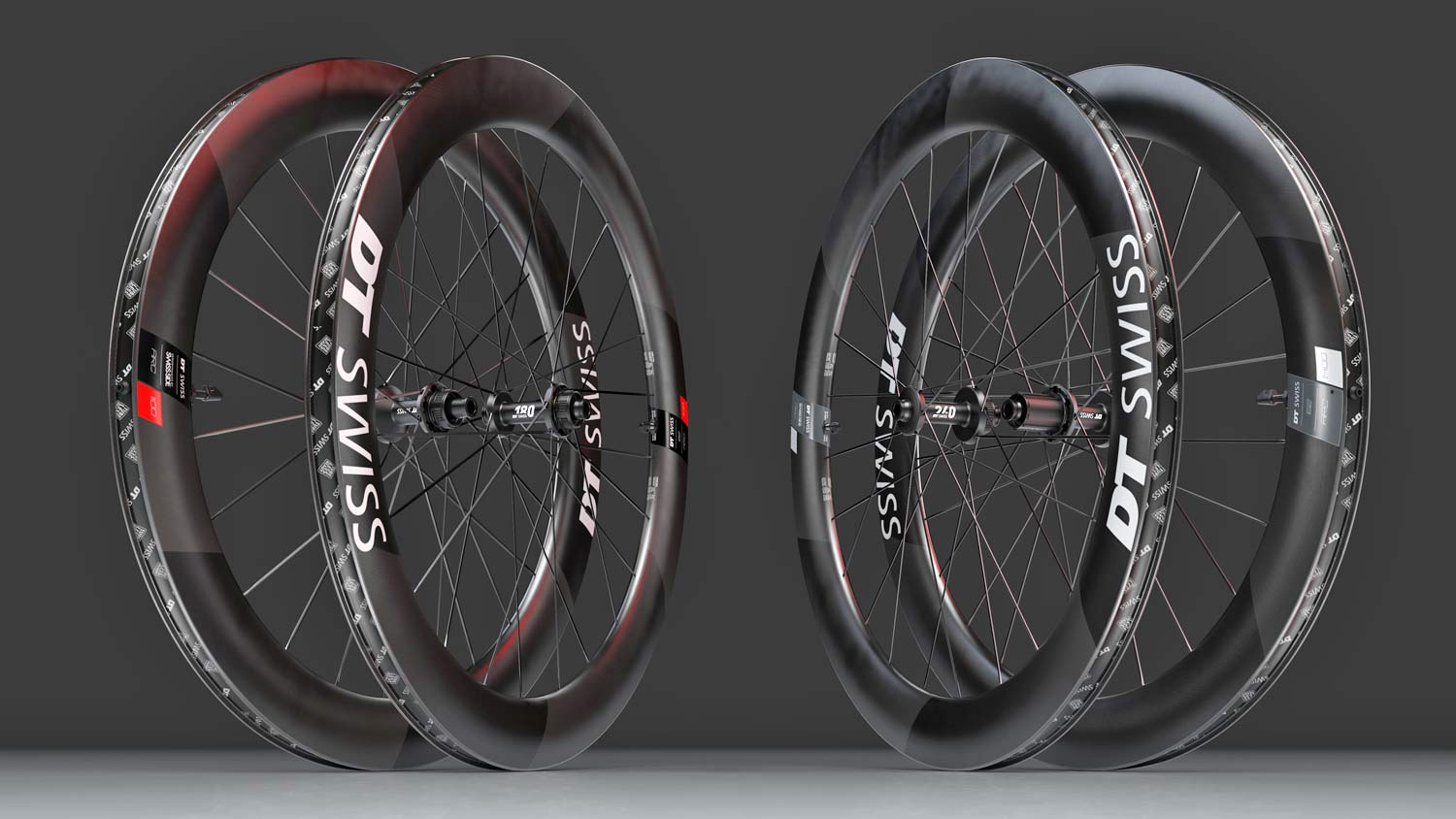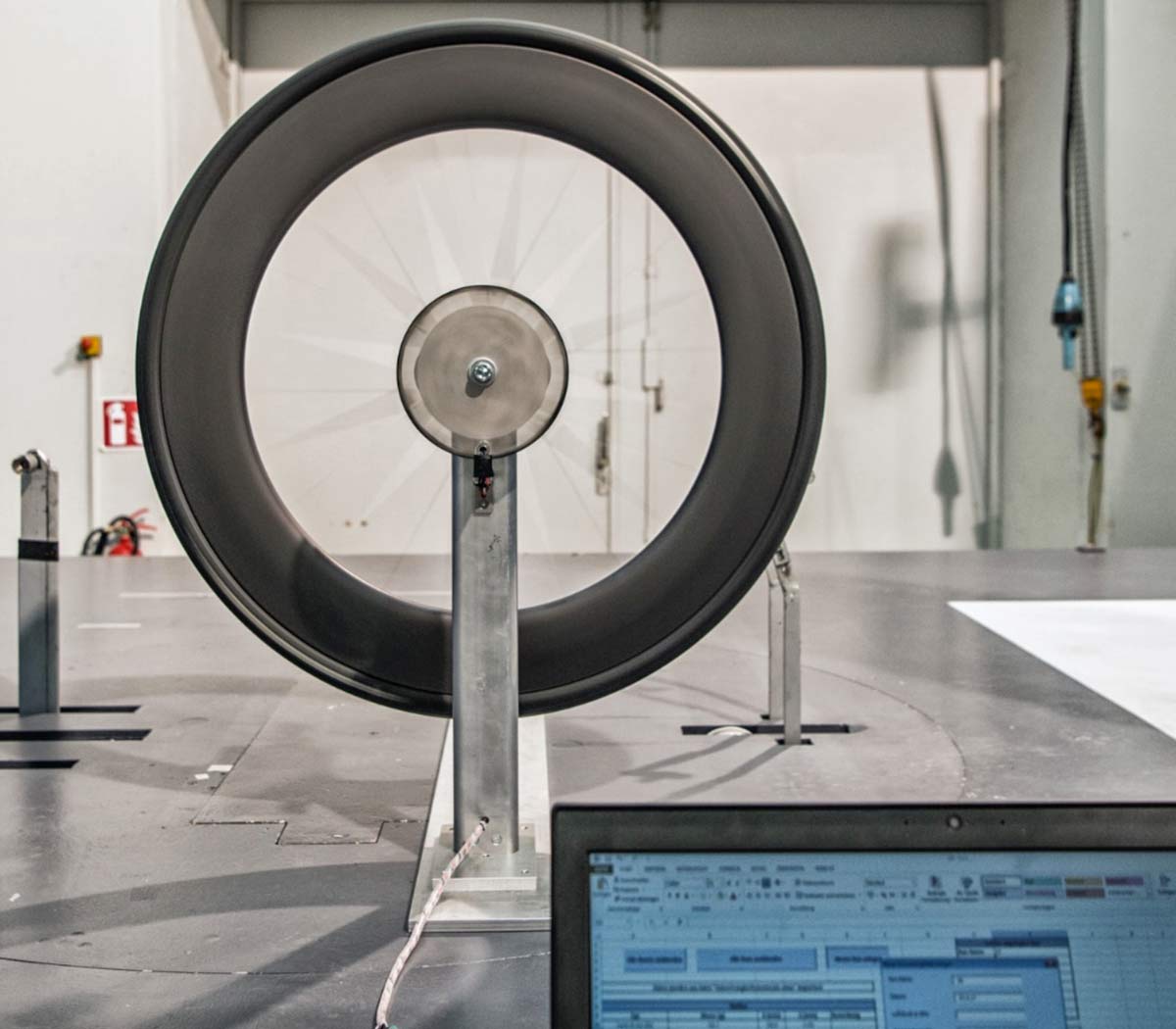The new DT Swiss ARC aero race carbon road bike wheels grow wider & faster in a complete aerodynamic overhaul, featuring all-new narrow-nose profiles optimized for modern wider tires.
Completely reshaped by wind tunnel work with Swiss Side to create both wider and faster wheels, the new ARC 1100 wheelsets take advantage of new VU-shaped rim profiles in three depths of 50, 62 & 80mm that DT Swiss says are quicker all-around even with almost 20% wider internals on the hooked tubeless rims…
DT Swiss ARC 2.0 redefines aero carbon road wheels with Swiss Side

We were in the GST wind tunnel with DT Swiss just three years ago when they first unveiled the overhauled aerodynamics of their ARC carbon wheels in a partnership with aero experts Swiss Side. At that time, they demonstrated big aero gains going from V to U-shaped rims. Now they are back with a complete redesign, something of an even better middle ground that they are calling a VU-shaped profile.
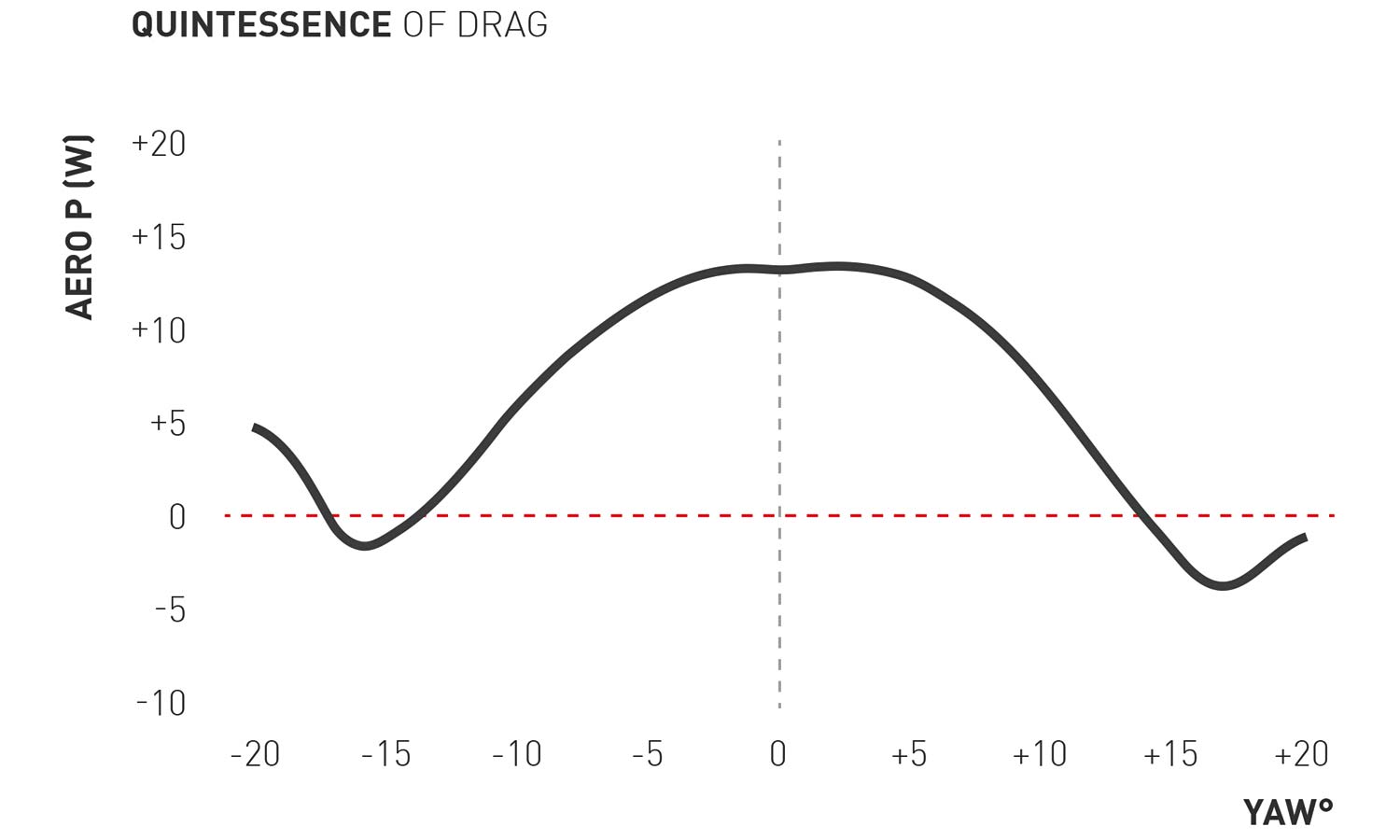
DT calls their aerodynamic focus Aero+. It’s a careful balance of:
- Drag reduction (translational and rotational drag)
- Optimized handling with minimized wind-induced steering moment
- Complete wheel+tire system efficiency including reduced rolling resistance
It could be simple enough to reduce head-on or even specific cross-wind drag in the wind tunnel, but for the last five years DT has worked closely with JP Ballard of Swiss Side for more realistic aerodynamics and drag reduction… hence Aero+.
DT ARC v2’s new, wider VU-shaped profile
The complete ground-up redesign of the ARC family of rim profiles takes lessons from the two shapes that have dominated road wheel aerodynamics: the original deep V-shape with flat sides and the more recent blunt U-shape with bulbous sides. DT’s new VU-shape is something of a happy medium, getting the more narrow nose but also the bulbous body, yet surprisingly coming out faster than either.
Much of that reduced drag can actually be attributed to increased width. A big part of that is the lack of any remnant of rim brake constraints, allowing DT Swiss to go ever wider at the tire, now to 20mm internal widths. But while wide means more frontal area, the newly wider inner width better supports modern-sized road tires. And the almost 30mm max outer width allows a smoother transition from tire to rim, so you get the full aero benefits with 25-28mm tires without the disrupted airflow caused by more lightbulb-shaped wide tires on narrow rims.

Wider rims (and of course road tubeless, which DT has fully adopted in every wheel since 2016) also mean decreased rolling resistance for faster rolling, improved comfort & control.
We talked to DT about specific tire testing, but they are a wheel company, so releasing tire testing is beyond their scope. But DT have done the tests in-house and seen the real speed benefit of the wider tubeless tires, so much so that they officially recommend using a 25mm tire up front with a 28mm tire in the back – where bike & rider turbulence negate smooth airflow gains – as the ultimate fastest setup on the new ARC wheels.
DT Swiss also sticks with the more complex, but more universal fit hooked tubeless rim with a bead-locking shoulder profile that works with every tire on the market.
Faster Aerolite II & Aero Comp II spokes, too

It’s not just faster rims, Swiss Side reminds us that 1/4 of wheel drag is rotational drag, so shortening the spokes with deep rims helps, but so does the spoke profile itself. So, the top 1100 series get all-new, more aerodynamic Aerolite II & Aero Comp II spoke shapes – 35% deeper & 23% thinner.
DT describes the new gen 2 aero spokes as faster and stronger thanks to additional forging, plus they get a second “blading” step for the final shape. And they get the T-heads debuted on the ERC wheels for perfect alignment. All told, they save up to 1.1W with the revised shaping.
The new Aerolite II & Aero Comp II only come on the 1100 series wheels, and will remain exclusive to the ARC 1100 wheels. The ARC 1400 wheel use previous aero spokes, and have both increased rotational & translation drag as a result.
Faster Dicut hubs, as well…
The new wheels also get updated aero-shaped Dicut hubs, featuring a single opening for each 2x pair of spokes to reduce flange size and centerlock disc brake interfaces. Inside the hubs use the latest Ratchet EXP in 180 level hubs with SINC ceramic bearings for the ARC 1100 & 240 hub internals with steel bearings for the ARC 1400 wheelsets.
New ARC aero wheels – Pricing, availability & options
The new ARC wheels come in three depths – 50mm, 62mm & 80mm…
…and two spec levels sharing the same Aero+ rims – red-label 1100 & gray-label 1400 – to suit a range on budgets and riding styles.

The ARC 1100 is the top of the line, with the new more aerodynamic Aerolite II & AeroComp II spokes and DT Swiss 180 Dicut hubs. Those 180-level hubs feature top-spec SINC ceramic bearings, a slimmed down centerlock rotor interface & 36T Ratchet EXP internals, plus the 1100 wheels also come with wheelbags.
The ARC 1100 Dicut wheels sell for $3,025 / 2,388€ regardless of depth, with claimed weights of 1,762g for 80mm, 1,676g for 62mm & 1,472g for 50mm deep wheels.

The ARC 1400 is meant to be a more affordable wheelset offering much of the same aerodynamics & performance with the same rim shapes & carbon layup. The 1400 wheels use standard Aerolite & AeroComp spokes and DT Swiss 240 Dicut hubs. The 240-level hubs get high-quality stainless steel bearings & new 36T Ratchet EXP internals.
The ARC 1400 Dicut wheels sell for $2,479 / 1,957€ regardless of depth, with claimed weights of 1,837g for 80mm, 1,753g for 62mm & 1,552g for 50mm deep wheels.
All of the new wheels come standard with a Shimano 11s freehub body & a SRAM XDR driver, Campagnolo freehub bodies are available separately. The 50mm deep wheels are also offered in 650b versions for smaller riders to get fast, too (1,381g for 1100s, 1,458g for 1400s).
All of the new ARC wheels are available now from your local DT Swiss dealers and retailers, and all include alloy tubeless valves, rubberized valve guards, & tubeless tape.
First Rides: DT Swiss ARC 1100 Dicut 62 aero wheels
We’ve just recently gotten a set of the new wheels in to test, to make our recent Merida Reacto faster than ever with the superlight new Pirelli P Zero Race TLR SL tubeless race tires. Out of the box, their tubeless setup was smooth and easy and the first rides felt fast from the initial pedal stroke.
To get a look at the actual weight of our 62mm test wheels and see how they ride, head over to our First Impressions coverage, including a detailed look at DT Swiss’ wind tunnel tested aerodynamics data comparing the new ARC wheels to previous versions & some of other aero leaders on the market now.
